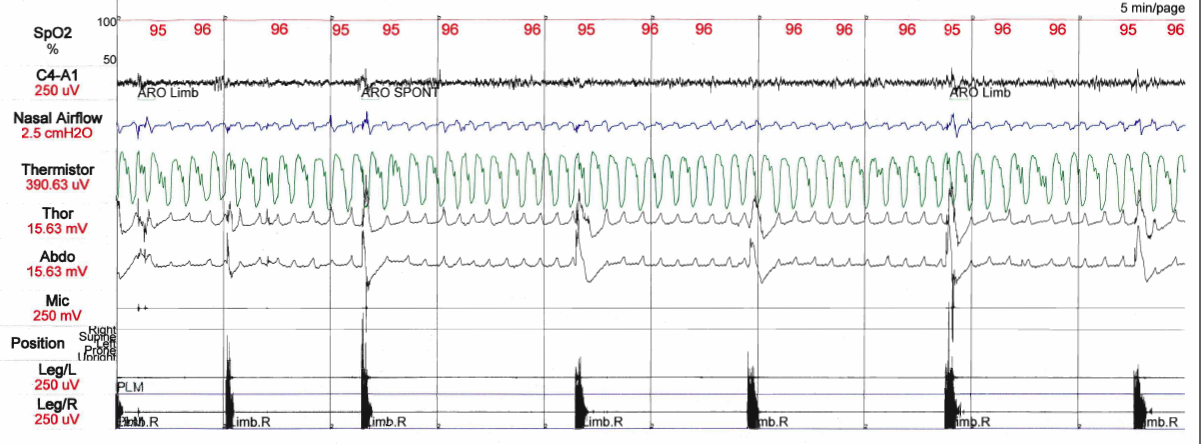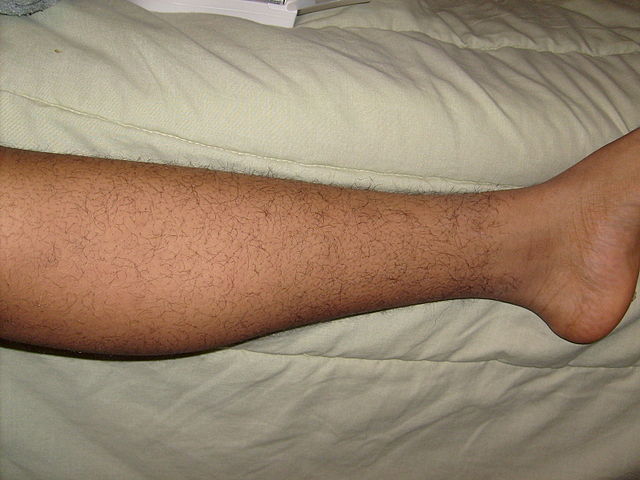Difference Between PLMD and RLS
What is PLMD
Definition:
PLMD is known as periodic limb movement disorder and is the condition in which the legs twitch every 20 to 40 seconds while a person is asleep.
Symptoms:

The main symptom is twitching of the legs while a person is asleep. This is an involuntary action that the person is not aware of. The repetitive and repeated movement of the legs during sleep causes disrupted sleep so people feel tired and sleepy during the day.
Diagnosis:
The diagnosis is based on a patient having disturbed sleep and by recording activity while the person is participating in a sleep study (polysomnography). During a sleep study, repetitive twitching of limbs can be recorded. Such patients often have trouble sleeping and may have leg twitching before falling asleep but most often this happens while they are asleep.
Causes and Risk Factors:
The exact cause of PLMD is unknown but it is believed that it can be triggered by certain conditions such as diabetes, low iron levels, injury to the spinal cord (including tumors), and certain medications. PLMD is more common in people who work shifts at night. People who snore and those who use hypnotics and are under a great deal of stress are also at increased risk of developing PLMD.
Treatment:
Treatment of PLMD is aimed at controlling the symptoms of the disorder. Medication such as benzodiazepines that helps to suppress the contraction of muscles can be used. Patients are also given medicine to increase dopamine levels in the brain which helps to also control muscle contractions.

What is RLS?
Definition:
RLS is known as restless legs syndrome in which the patient has an urge to move the legs or arms, which often happens when they are sitting or trying to get to sleep. RLS is a nervous system disorder that is also known as Willis-Ekbom disease.
Symptoms:
People with RLS have a hard time falling asleep because their legs tend to move and so they are often sleepy during the day and feel very fatigued. They also tend to have a creeping or crawling sensations in their legs as well. Patients have a very difficult time trying to remain still, and the urge to move can also sometimes be found in the arms, face, and trunk of the body.
Diagnosis:
The condition can be diagnosed by noting the physical symptoms such as the urge to move and unpleasant creeping sensations in legs, becoming worse at night, usually while resting or right before going to sleep. Patients have a hard time falling asleep at night and the movement of the affected part of the body helps to relieve the unpleasant feeling that they have.
Causes and Risk Factors:
The exact cause of RLS is not known for certain, but it does seem to involve the nerves in the brain that respond to the neurotransmitter dopamine, and it appears to have a genetic component. There are also factors that seem to trigger RLS such as low iron levels in the body, and being in kidney failure. RLS is more common in people who have high blood pressure (hypertension), are obese, elderly and who smoke more than 20 cigarettes a day. Having more than 3 alcoholic drinks a day and being on an SSRI medication also increases your risk of developing RLS.
Treatment:
The symptoms of RLS can be treated using various medications that increase dopamine in the brain and that calm muscle contractions; and in the cases where it is due to low iron, oral iron supplements can be given to patients.
Difference Between PLMD and RLS?
Definition
PLMD is periodic limb movement disorder in which leg muscles twitch repeatedly for 20 to 40 seconds during sleep, while RLS is restless legs syndrome in which people have the urge to move and unpleasant sensations in the legs while at rest or before going to sleep.
Symptoms
In PLMD leg twitching occurs during sleep while in RLS it occurs while sitting or just before going to sleep, and includes unpleasant sensations in the legs.
Type of Muscle Contraction
PLMD entails an involuntary contraction of the skeletal muscles, while RLS entails a voluntary contraction of the skeletal muscles.
Diagnosis
PLMD is diagnosed by noting physical symptoms and by performing a sleep study in which muscle contractions are recorded. RLS is diagnosed by noting physical symptoms.
Risk Factors
PLMD is more common in people who snore, those who use hypnotics, and people who are under a great deal of stress. People who work shifts at night are also at increased risk of PLMD. RLS is more prevalent in people who have high blood pressure, are obese, smoke more than 20 cigarettes a day and drink more than 3 alcoholic beverages a day. Elderly people and people on SSRI medicines are also at higher risk of RLS.
Table comparing PLMD and RLS

Summary of PLMD Vs. RLS
- Both PLMD and RLS lead to fatigue and sleepiness.
- Both conditions seem to involve a problem with the dopamine system in the brain and can be affected by iron levels in the body.
- PLMD occurs while a person is asleep and includes muscle twitches that occur in a repetitive fashion.
- RLS occurs while a person is at rest and before they can fall asleep, and involves a feeling of wanting to move the legs, as well as unpleasant crawling or creeping sensations in the legs.
- Difference Between Rumination and Regurgitation - June 13, 2024
- Difference Between Pyelectasis and Hydronephrosis - June 4, 2024
- Difference Between Cellulitis and Erysipelas - June 1, 2024
Search DifferenceBetween.net :
Leave a Response
References :
[0]Doghramji, Karl. “Periodic Limb Movement Disorder (PLMD) and Restless Legs Syndrome (RLS)”. Merckmanuals. Merck & Co., 2018, https://www.msdmanuals.com/professional/neurologic-disorders/sleep-and-wakefulness-disorders/periodic-limb-movement-disorder-plmd-and-restless-legs-syndrome-rls
[1]Garcia-Borreguero, Diego, et al. "Algorithms for the diagnosis and treatment of restless legs syndrome in primary care." BMC neurology 11.1 (2011): 28.
[2]Ulfberg, Jan, Romana Stehlik, and Ulrike Mitchell. "Treatment of restless legs syndrome/Willis-Ekbom disease with selenium." Iranian journal of neurology 15.4 (2016): 235.
[3]Image credit: https://upload.wikimedia.org/wikipedia/commons/thumb/f/fb/Teen_Boy%27s_Legs.jpg/640px-Teen_Boy%27s_Legs.jpg
[4]Image credit: https://en.wikipedia.org/wiki/Periodic_limb_movement_disorder#/media/File:PLMD_Polysomnogram.png
